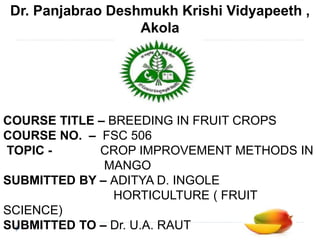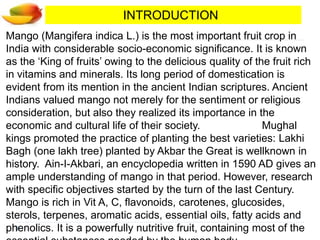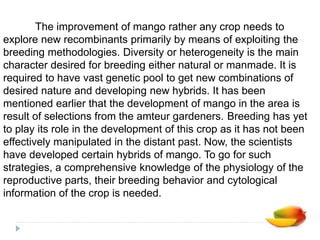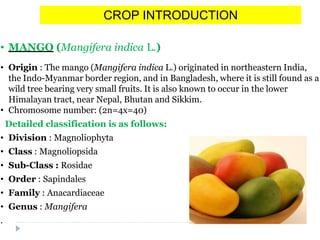This document provides information on mango breeding methods. It discusses the reproductive physiology and breeding problems of mango, including its long juvenility period and heterozygosity. Several mango hybrid varieties developed through breeding programs are described, including Mallika, Amrapali, and Ratna. The document also outlines the classification and origin of mango as well as important mango species and their potential uses.













































